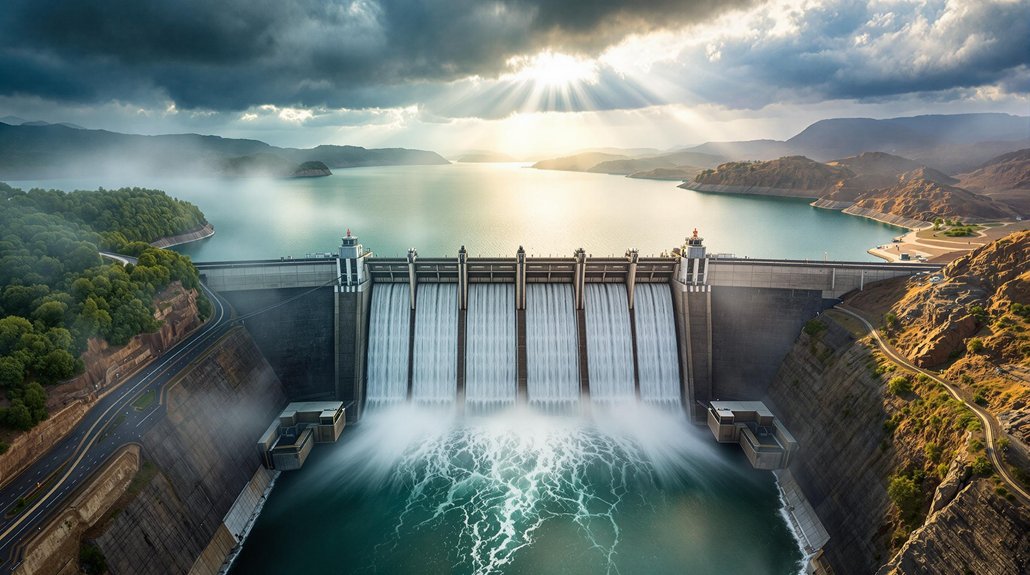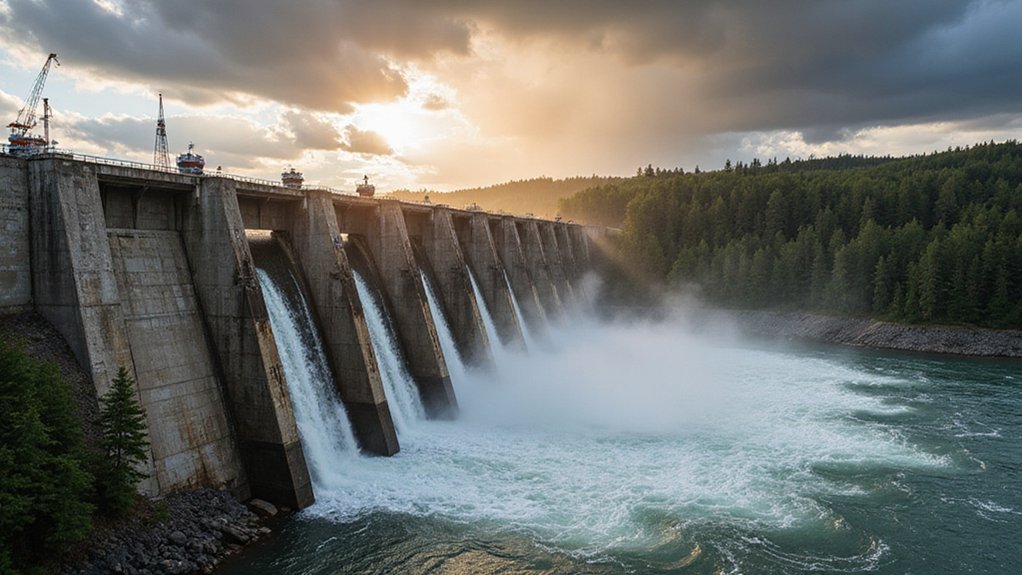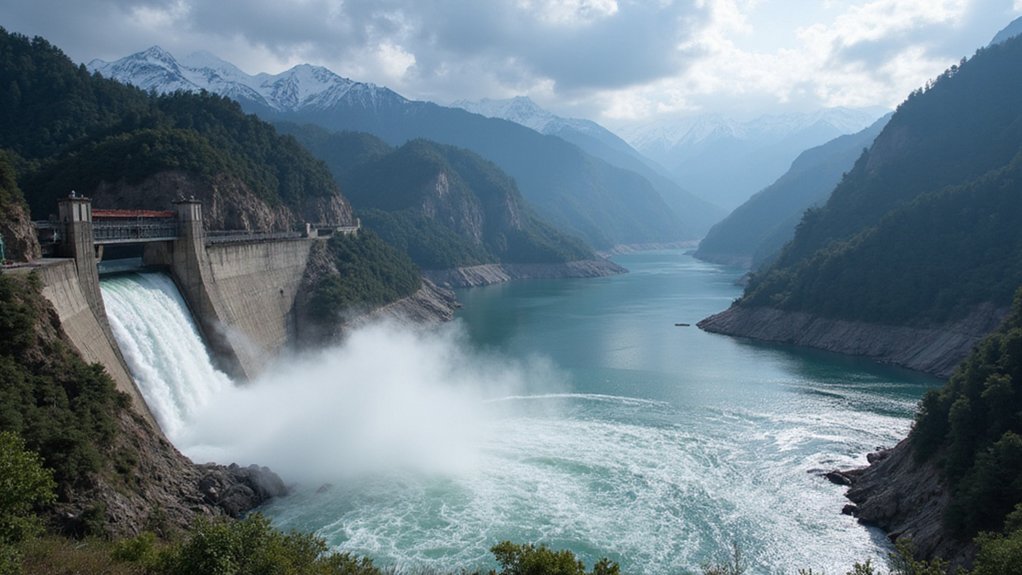The ocean energy market is set to grow to $21.8 billion by 2034, expanding at 34.8% annually. Tidal energy leads with 58.3% market share, while wave energy grows rapidly at 32% yearly. The Asia-Pacific region dominates with 45.2% of the market. Governments worldwide support ocean energy, with the EU making it a strategic technology and the UK targeting 27 GW by 2050. Further exploration reveals promising potential despite initial challenges.
While renewable energy sources like solar and wind power have dominated headlines, a quieter revolution is taking place beneath the waves. The global ocean energy market is expected to reach $21.8 billion by 2034, growing at an impressive compound annual growth rate of 34.8% over the next decade.
As solar and wind steal the spotlight, ocean energy silently surges toward a $21.8 billion future beneath the waves.
Oceans offer multiple forms of untapped renewable energy. Wave energy could provide 10% of global electricity needs, while tidal energy has a potential of 100 GW worldwide. Other promising technologies include ocean thermal energy conversion with 300 GW potential and salinity gradient systems that could generate 2,000 TWh annually.
The market is already showing significant traction. Tidal energy currently holds the largest share at 58.3%, with wave energy expected to grow rapidly at 32% annually through 2028. The Asia-Pacific region leads with 45.2% of the market share. The development of multi-use platforms combining energy production with aquaculture offers additional economic benefits beyond electricity generation.
Various technologies are being deployed to capture ocean energy. Wave energy converters harness the motion of waves, while tidal stream turbines capture energy from tidal currents. Tidal barrages use the difference between high and low tides, and oscillating water columns convert wave pressure into electricity. The innovative Tidal Stream Generator technology has captured over 30% of the market in 2024, demonstrating its commercial viability.
Governments worldwide are supporting ocean energy development. The European Union has declared it a strategic technology in its Net-Zero Industry Act and set specific deployment targets. The UK aims for 27 GW of wave energy by 2050, and programs like the TIGER tidal project have received substantial funding.
Despite its potential, ocean energy faces challenges. High initial costs, harsh marine environments, and potential impacts on ecosystems are concerns. Regulatory hurdles also slow development in many countries.
The future looks promising for ocean energy, with over 100 MW of new capacity planned. As technology improves and costs decrease, these systems could provide reliable power to coastal and island communities while helping reduce carbon emissions and combat climate change.









